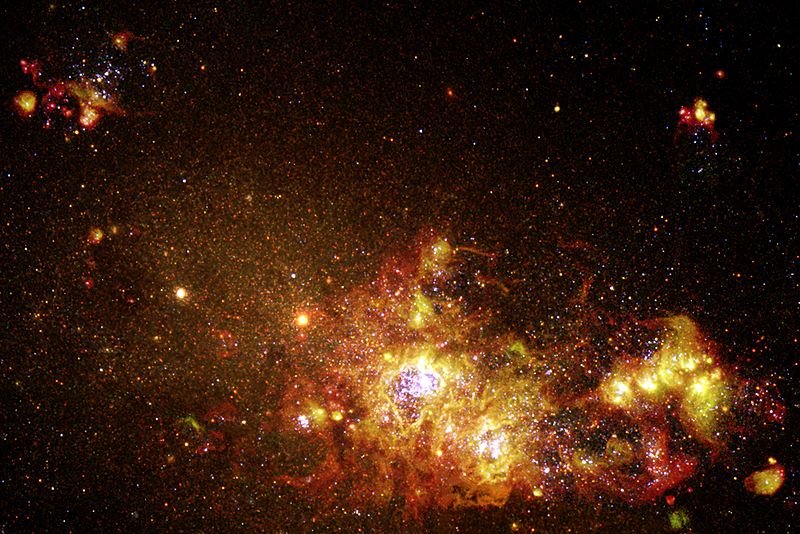Image: NGC 4214HSTFull

Description: Located some 13 million light-years from Earth, NGC 4214 is currently forming clusters of new stars from its interstellar gas and dust. In this Hubble image, we can see a sequence of steps in the formation and evolution of stars and star clusters. The picture was created from exposures taken in several color filters with Hubble's Wide Field Planetary Camera 2. NGC 4214 contains a multitude of faint stars covering most of the frame, but the picture is dominated by filigreed clouds of glowing gas surrounding bright stellar clusters. The youngest of these star clusters are located at the lower right of the picture, where they appear as about half a dozen bright clumps of glowing gas. Young, hot stars have a whitish to bluish color in the Hubble image, because of their high surface temperatures, ranging from 10,000 up to about 50,000 degrees Celsius. The radiation and wind forces from the young stars literally blow bubbles in the gas. Over millions of years, the bubbles increase in size as the stars inside them grow older. Moving to the lower left from the youngest clusters, we find an older star cluster, around which a gas bubble has inflated to the point that there is an obvious cavity around the central cluster. The most spectacular feature in the Hubble picture lies near the center of NGC 4214. This object is a cluster of hundreds of massive blue stars, each of them more than 10,000 times brighter than our own Sun. A vast heart-shaped bubble, inflated by the combined stellar winds and radiation pressure, surrounds the cluster. The expansion of the bubble is augmented as the most massive stars in the center reach the ends of their lives and explode as supernovae. The principal astronomers are: John MacKenty, Jesus Maiz-Apellaniz (Space Telescope Science Institute), Colin Norman (Johns Hopkins University), Nolan Walborn (Space Telescope Science Institute), Richard Burg (Johns Hopkins University), Richard Griffiths (Carnegie Mellon University), and Rosemary Wyse (Johns Hopkins University).
Title: Fireworks of Star Formation Light Up a Galaxy - GPN-2000-000877
Credit: Great Images in NASA Description, HubbleSite: NewsCenter
Author: NASA and The Hubble Heritage Team (STScI)
Usage Terms: Public domain
License: Public domain
Attribution Required?: No
Image usage
The following page links to this image:

